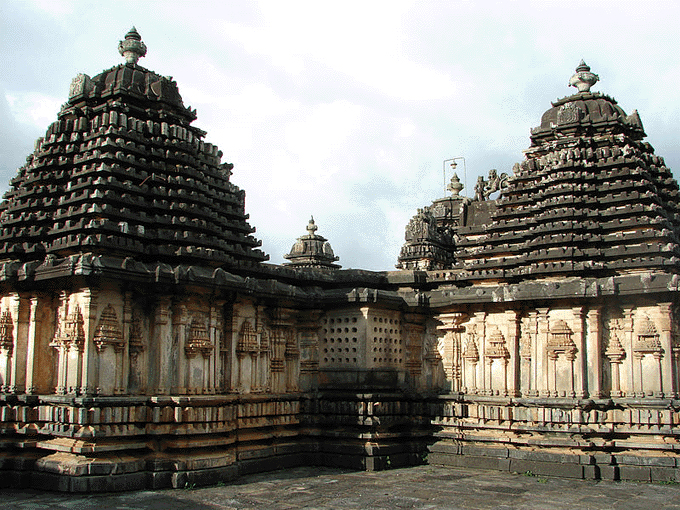
|
|
|
|
BY: SUN STAFF

Kadamba tower at Lakshmidevi Temple, Doddagaddavalli May 15, 2021 — CANADA (SUN) — A serial presentation of India's great history, religious movements and temple architecture.
The Kadambas
In our opening segment on the dynasties of the Deccan Plateau and South India, starting with the Sangam Era Kingdoms, we introduced three predominant empires: the Chera, the Chola and the Pandya. Having now covered the Cheras, we will move on to the Cholas and Pandyas as they arise on the timelines. First, however, a summary of the Kadambas.
'The Kadamba Dynasty was an ancient royal family of Karnataka that ruled during the period 345–525 A.D., from their capital city in Banavasi, present day Uttara Kannada district. The dynasty later continued to rule as a feudatory of larger Kannada empires, the Chalukya and the Rashtrakutas, for over five hundred years. During this time they expanded into Goa and Hanagal (modern Haveri district). At the peak of their power under King Kakushtavarma, they ruled large parts of Karnataka state.
The Kadambas were contemporaries of the Western Ganga Dynasty of Talakad, seated on the west bank of the Kaveri River near Mysore.
During the pre-Kadamba era, the ruling families that controlled Karnataka -- the Mauryas, Satavahanas and Chutus -- were not natives of the region. The nucleus of their power resided outside of present day Karnataka. The Kadambas were the first indigenous dynasty to use Kannada, the language of the soil at an administrative level.
In the history of Karnataka, this era serves as a broad based historical starting point in the study of the development of region as an enduring geo-political entity, and Kannada as an important regional language. Writings on spiritual philosophy in Old Kannada were primarily Jain and Shaivite, with brahminical Vaisnava writings not proliferating until the 9th Century.
The Kadamba Dynasty was founded by Mayurasharma in 345 A.D. At times, the empire showed potential for developing into imperial proportions, an indication provided by the titles and epithets assumed by its rulers. One of Mayurasharma's successors, Kakusthavarma was a powerful ruler. Even the kings of the imperial Gupta Dynasty of northern India cultivated marital relationships with his family, giving a fair indication of the sovereign nature of their kingdom.
Tiring of the endless battles and bloodshed, one of the later descendants, King Shivakoti adopted Jainism.
| |